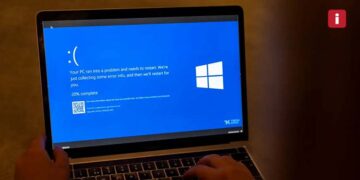The Day Video Calls Went Silent
On April 16, 2025, thousands of users across the globe were abruptly disconnected from their Zoom meetings. For nearly two hours, frustration surged as classrooms, corporate calls, and even virtual court hearings came to a grinding halt. What happened? Why did one of the world’s most relied-upon communication tools suddenly crash?
Let’s break it down.
The Breakdown: When Zoom Went Down
Reports started flooding in around 2:40 PM ET, primarily from the U.S., India, the U.K., and other major Zoom markets. Users were either unable to log in or met with the notorious 502 Bad Gateway error.
By the peak of the incident, over 67,000 reports were logged on platforms like Downdetector.
The Suspected Cause: Domain Registry Glitch
While Zoom has remained tight-lipped about the full technical details, sources suggest the issue stemmed from a DNS configuration or domain registry verification error. Such an issue can prevent browsers from properly locating Zoom’s servers—essentially making the platform vanish from the internet, temporarily.
The Fix: Swift but Serious
Zoom engineers responded quickly, and by 5 PM ET, services were largely restored. The company issued a statement apologizing for the disruption and confirmed that no user data was compromised.
This incident, however, raises a critical question…
What If This Happened During a Global Crisis?
Zoom isn’t just a business tool anymore. It’s become a backbone for online education, remote healthcare, legal proceedings, and even international diplomacy.
A brief outage may seem minor—but what if it had occurred during a UN virtual summit, a telemedicine surgery, or live elections in progress?
What Users Said Online (And The Memes That Followed)
Of course, the internet did what it does best—it turned the chaos into comedy. Memes comparing the outage to the “Great Facebook Crash of 2021” flooded Twitter (X), Reddit, and Threads.
“When Zoom goes down, so does half the world’s productivity” — one user posted, ironically from Teams.
What This Means for You
If you rely on Zoom for work, education, or business, this is a wake-up call to:
- Have backup communication platforms ready (like Google Meet or Microsoft Teams).
- Ensure your team is aware of real-time status pages (e.g. status.zoom.us).
- Use redundant systems when possible for critical operations.
The Bigger Picture: Is Centralization Dangerous?
Zoom’s 2025 outage has reopened the conversation around centralized infrastructure vs. decentralized solutions. Platforms like Zoom are powerful, but when one goes down, millions are impacted.
Expect a renewed interest in P2P video calling tech, blockchain-based communication tools, and hybrid cloud conferencing models.
Final Thoughts
The 2025 Zoom outage wasn’t just a glitch it was a glimpse into the fragility of our digital reliance. As we continue to digitize every aspect of life, ensuring redundancy, transparency, and infrastructure resilience isn’t optional it’s essential.
Stay connected. Stay prepared.













































